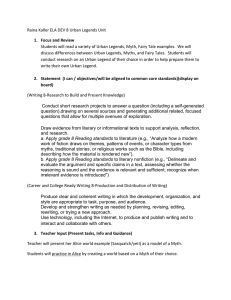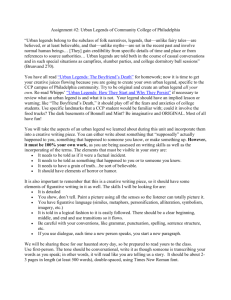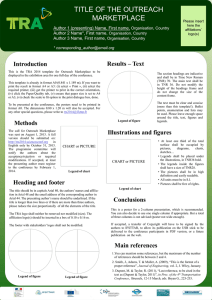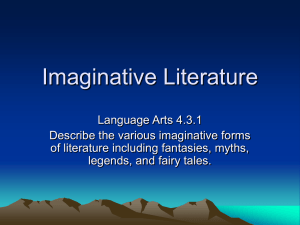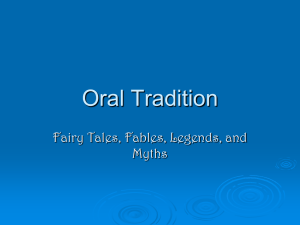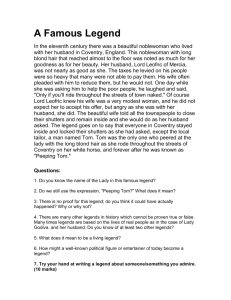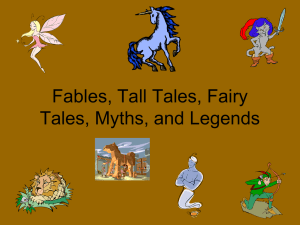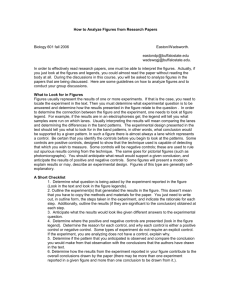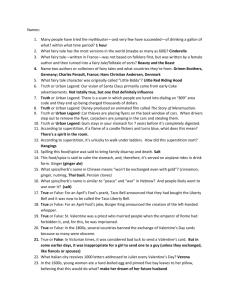How to Teach with Legends Slides
advertisement
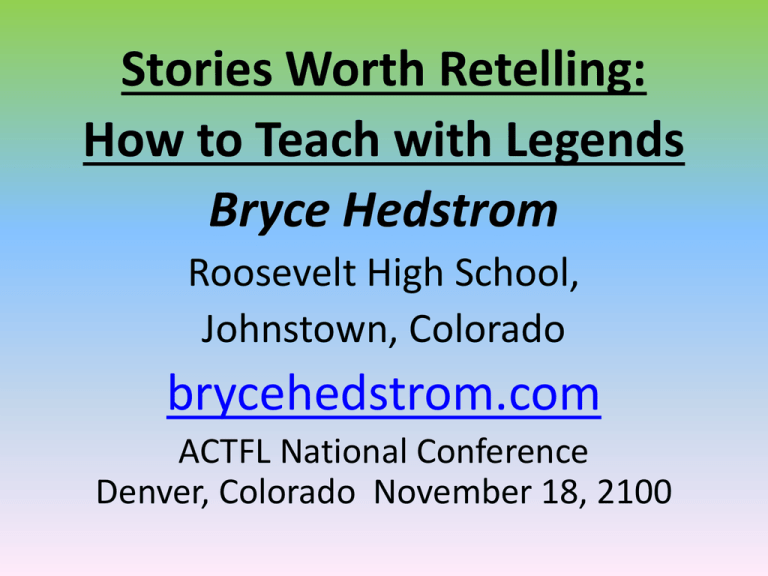
Stories Worth Retelling: How to Teach with Legends Bryce Hedstrom Roosevelt High School, Johnstown, Colorado brycehedstrom.com ACTFL National Conference Denver, Colorado November 18, 2100 ACTFL STANDARDS CULTURES Gain Knowledge and Understanding of Other Cultures • Standard 2.1: Students demonstrate an understanding of the relationship between the practices and perspectives of the culture studied • Standard 2.2: Students demonstrate an understanding of the relationship between the products and perspectives of the culture studied "If you want your children to be intelligent, read them fairy tales. If you want them to be more intelligent, read them more fairy tales." "If you want your children to be intelligent, read them fairy tales. If you want them to be more intelligent, read them more fairy tales." — Albert Einstein Pick a Worthwhile Story Pick a Worthwhile Story Ideally, it should be: • Familiar in the culture • Used for different purposes • Something with staying power Pick a Worthwhile Story Familiar in the culture • Everybody tells it • Contains cultural themes Pick a Worthwhile Story Used for different purposes • Expresses values of the culture (Not just an interesting story) • Is adaptable Pick a Worthwhile Story Something with staying power • We want to hear it again • Has deeper subtext (subliminal messages) It’s OK to tell it again! Spoilers don't ruin stories or films: study A new study by researchers from the University of California at San Diego shows the plot itself isn't critical. A book or movie can be re-read or seen multiple times and still be enjoyable. The success of entertainment does not rest on suspense alone. Legends Legends "It is quite easy to see why a legend is treated, and ought to be treated, more respectfully than a book of history. The legend is generally made by a majority of the people in the village who are sane. The book is generally written by the one man in the village who is mad." G.K. Chesterton, Orthodoxy • Legends are stories created by anonymous authors with some basis in history but with many embellishments. Legends show us the vision of the world and the life that people had with, historical, political, philosophical, and cultural value. Myths • Myths are stories that explain the origin of gods or of the creation of our world. They usually show us religion, beliefs or try to explain natural phenomena. Telling a Legend • Start with a simple version (We listen for meaning first, details later) • Teach vocabulary • Retell with more detail, answering questions along the way. • More detail makes it more interesting • Details are important, but we can’t hear details at first. Initial Telling NEW VOCAB woman husband seems like they die/she dies returns keeps on yelling keeps on crying keeps on looking for FAMILIAR VOCAB children goes away is sad river pushes water night beside Don’t forget what you already know about telling stories to students: • Stay in bounds (Don’t use words they don’t know) • Teach to the eyes (You can see if they get it) • Use your voice “High, low; fast, slow; loud, soft; pause” Mem Fox—Reading Magic • Build anticipation “Pero hay un problema…” But there is a problem… “Pero esto no es el fin del cuento…” But this is not the end of the story… The legend of La Llorona is not just an interesting story—it displays values in Hispanic culture • What are some possible values that are being taught in this story? • Tell low, test high. Tell the story in a comprehensible way, using simple words that students know. Assess it with higher order thinking. • Use English, if needed for, higher order thinking that the students may not have words for yet. The Cry DVD about the legend of La Llorona Directed by Bernadine Santistevan Lallorona.com • • • • Ixta y Popo La Calle de la Quemada Bailando con una Fantasma Compartiendo con la Muerte TIME TO PROCESS! • Think of a legend from your target culture that you could tell with limited vocabulary How can you simplify it? • Adapt it with high frequency words Use pre-existing vocabulary Use no more than 8 new words/structures Write it down Any story, but especially a legend, can be told on many different levels—level I to AP Keep spiraling up and out with each re-telling Keep Trying! The Pareto principle (also known as the 80-20 rule) states that for many events roughly 80% of the effects come from 20% of the causes. 80% of the plans will not work. The point is to keep trying: Without the 80% of the plans that fail, the 20% of the plans that succeed would not succeed.
